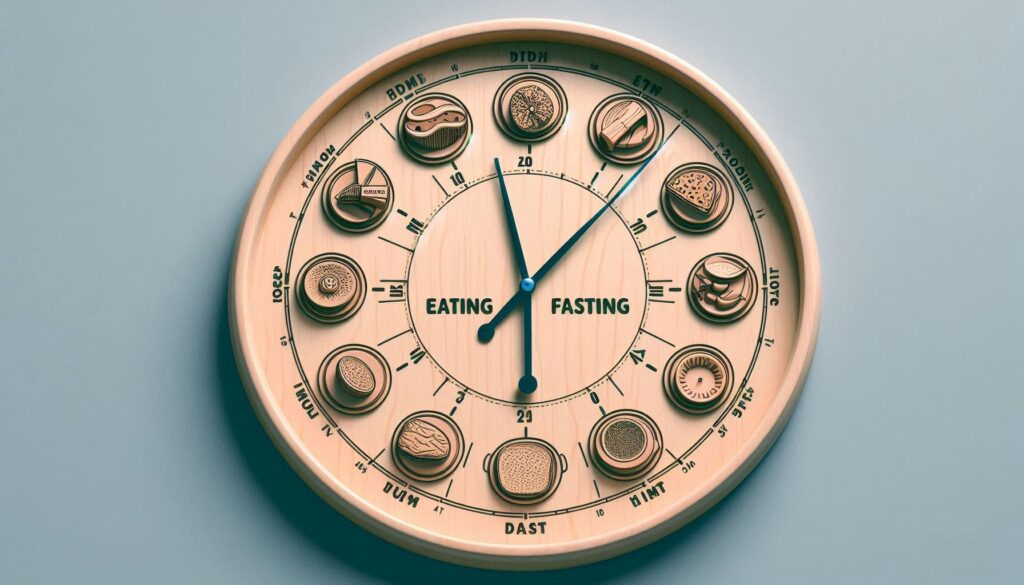
Article 22 of our Series “Nourishing Your Whole Self: The SaziBox Health Guide to Holistic Nutrition”
In the quest for better health and a desired physique, we often find ourselves navigating a maze of conflicting dietary advice. It can be overwhelming to distinguish between fad diets vs. healthy eating habits. Fad diets promise rapid weight loss or miraculous health transformations, yet they often lead to frustration and disappointment in the long run.
In this article, we’ll delve deeper into the world of fad diets vs. healthy eating, exploring their key differences, potential pitfalls, and the path towards sustainable well-being.
Understanding Fad Diets: The Allure and the Aftermath

Fad diets are trendy eating plans that promise rapid weight loss or other health benefits, often with little scientific evidence to back up their claims. They tend to gain popularity quickly due to aggressive marketing and celebrity endorsements.
- Common Characteristics of Fad Diets:
- Restrictive: Often eliminate entire food groups or severely limit calorie intake.
- Unsustainable: Difficult to maintain long-term due to their rigid rules and lack of flexibility.
- Focus on Short-Term Results: Prioritize rapid weight loss over overall health and well-being.
- Lack of Scientific Evidence: This may not be backed by solid research or may rely on anecdotal evidence.
While fad diets may offer initial results, they often lead to:
- Nutrient Deficiencies: Restricting food groups can lead to inadequate intake of essential vitamins and minerals.
- Yo-Yo Dieting: The cycle of rapid weight loss and regain can negatively impact metabolism and overall health.
- Unhealthy Relationship with Food: Fad diets can foster a sense of guilt and shame around food, leading to disordered eating patterns.
Examining Popular Fad Diets vs. Healthy Eating
Let’s take a closer look at some common fad diets and compare them to the principles of healthy eating:
1. The Keto Diet

The ketogenic (keto) diet drastically reduces carbohydrate intake and encourages high-fat consumption to induce ketosis.
- Benefits:
- Can lead to rapid weight loss.
- May improve blood sugar control in people with diabetes.
- Risks:
- Can cause side effects like the “keto flu” (headache, fatigue, nausea).
- May lead to nutrient deficiencies.
- Potential long-term risks to heart and kidney health.
- Sustainability:
- Very restrictive and challenging to maintain long-term.
- Not suitable for everyone, especially those with certain health conditions.
- It’s crucial to consult with a healthcare professional before embarking on such a restrictive diet.
In contrast, healthy eating focuses on a balanced intake of all macronutrients, including carbohydrates, from a variety of whole food sources.
2. The Paleo Diet

The paleo diet focuses on foods presumed to have been eaten by early humans, like meat, fish, vegetables, fruits, nuts, and seeds. It excludes grains, legumes, dairy, and processed foods.
- Benefits:
- Can promote weight loss.
- May improve blood sugar control and reduce inflammation.
- Risks:
- This may lead to nutrient deficiencies, particularly in calcium and vitamin D, due to the exclusion of dairy.
- Sustainability:
- Restrictive and challenging to follow long-term, especially for those who enjoy grains and legumes.
- Important to ensure adequate intake of all essential nutrients when following this diet.
Healthy eating, on the other hand, encourages the inclusion of all food groups in moderation, including whole grains and legumes, for a well-rounded and sustainable diet.
3. Intermittent Fasting

Intermittent fasting (IF) is an eating pattern that cycles between periods of eating and fasting. Popular methods include the 16/8 method (16 hours of fasting, 8 hours of eating) and the 5:2 method (eating normally for 5 days, restricting calories for 2 days).
- Benefits:
- May promote weight loss
- May improve insulin sensitivity
- May boost cellular repair processes
- Risks:
- Can lead to hunger, fatigue, and nutrient deficiencies if not done properly
- Not suitable for everyone, especially those with certain medical conditions
- Consulting a healthcare professional is advised before starting any intermittent fasting regimen
In contrast, healthy eating promotes regular, balanced meals and snacks throughout the day to provide your body with consistent energy and nutrients.
4. Intuitive Eating: A Mindful Approach to Healthy Eating

Intuitive eating is a non-diet approach that focuses on honouring your hunger, respecting your fullness, and making food choices without guilt or judgment. It’s a sustainable path to healthy weight management that fosters a positive relationship with food.
It’s a sustainable path to healthy weight management that fosters a positive relationship with food, starkly contrasting the restrictive nature often associated with fad diets.
- Benefits:
- Promotes a healthy relationship with food
- Improves body image
- Supports sustainable weight management
- Challenges:
- Requires unlearning diet culture and developing trust in your body’s signals.
5. The Mediterranean Diet: A Model of Healthy Eating

The Mediterranean diet emphasizes whole, plant-based foods like fruits, vegetables, whole grains, legumes, nuts, and seeds. It also includes moderate amounts of fish, poultry, and dairy, and limits red meat and processed foods.
- Benefits:
- Reduced risk of heart disease, stroke, type 2 diabetes, and certain types of cancer.
- Supports brain health, gut health, and overall well-being.
- It’s a sustainable and enjoyable way of eating that can be easily maintained long-term, making it an excellent model for healthy eating.
Fad Diets vs. Healthy Eating: The Key Differences

| Feature | Fad Diets | Healthy Eating |
|---|---|---|
| Focus | Rapid weight loss, often through restrictive measures | Overall health and well-being, with sustainable weight management as a natural outcome |
| Sustainability | Difficult to maintain long-term due to rigid rules and restrictions | Flexible and adaptable to individual needs and preferences |
| Nutrient Intake | May lead to nutrient deficiencies due to the elimination of food groups | Prioritizes a variety of nutrient-dense foods for optimal health |
| Psychological Impact | Can create a negative relationship with food, leading to guilt, shame, and disordered eating patterns | Promotes a positive and balanced relationship with food, free from judgment and restriction |
| Long-Term Outcomes | Often leads to weight regain and yo-yo dieting, potentially harming metabolism and overall health | Supports sustainable weight management and long-term health benefits |
Transitioning from Fad Diets to Healthy Eating

If you’ve been caught in the cycle of fad diets, transitioning to healthy eating can feel overwhelming. Here are some tips to guide you:
- Focus on Whole Foods: Fill your plate with fruits, vegetables, whole grains, lean proteins, and healthy fats.
- Practice Moderation: Allow yourself to enjoy all foods in moderation, without labelling them as “good” or “bad.”
- Listen to Your Body: Pay attention to your hunger and fullness cues and eat when you’re truly hungry.
- Make Gradual Changes: Don’t try to overhaul your diet overnight. Start by making small, sustainable changes that you can stick to.
- Seek Support: A registered dietitian or healthcare professional can provide guidance and support as you transition to a healthier eating pattern.
Nourishing Your Whole Self
Remember, the goal is to cultivate a healthy and sustainable relationship with food, moving away from the quick-fix allure of fad diets and towards long-term nourishment and well-being. By prioritizing nourishing foods, mindful eating practices, and ditching the quick-fix mentality of fad diets, you can achieve your health and wellness goals while enjoying the pleasures of eating.
- Share your experiences with fad diets or healthy eating in the comments below!
- Have questions about transitioning to a healthier lifestyle? We’re here to help!
- Explore the other articles in our “Nourishing Your Whole Self” series for more holistic nutrition insights.
Let’s embrace the power of healthy eating and create a happier, healthier you!



